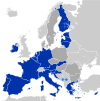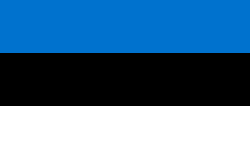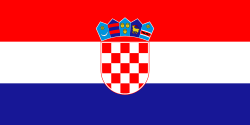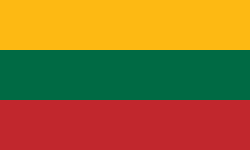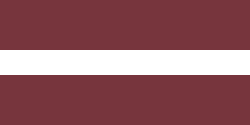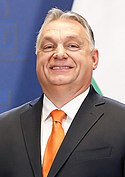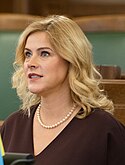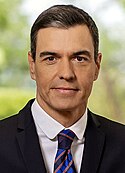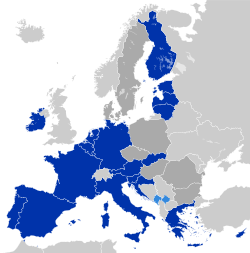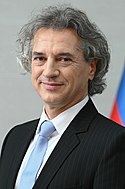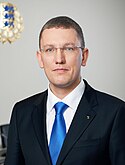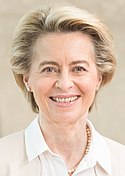Evropská rada
| Evropská rada | |
|---|---|
 Logo Evropské rady | |
| Vznik | 1961 2009 (oficiálně) |
| Typ | Instituce Evropské unie |
| Sídlo | Budova Europa, Brusel |
| Předseda | António Costa |
| Oficiální web | www |
| Některá data mohou pocházet z datové položky. | |
| Evropská unie |
 Tento článek je o: |
Politika |
|
Evropská rada (ER) je institucí Evropské unie (EU), která určuje hlavní politické směřování a priority unie. Jejími členy jsou hlavy států nebo předsedové vlád členských zemí EU, předseda Evropské rady a předseda Evropské komise.
Předsednictví se do přijetí Lisabonské smlouvy odvozovalo od předsednictví v Radě Evropské unie. V souladu s ustanoveními Lisabonské smlouvy byla zavedena funkce stálého předsedy Evropské rady, který je dle čl. 15 odst. 5 této smlouvy volen kvalifikovanou většinou členů Evropské rady na 2,5leté funkční období s tím, že může být zvolen dvakrát po sobě. Prvním stálým předsedou Evropské rady se 1. prosince 2009 stal Belgičan Herman Van Rompuy. Od 1. prosince 2019 funkci zastával jeho krajan Charles Michel, syn bývalého eurokomisaře, belgický ministr zahraničí a v letech 2014 až 2019 předseda vlády. Od 1. prosince 2024 jen nahradil bývalý portugalský premiér António Costa.
Evropská rada se schází zpravidla čtyřikrát ročně na řádném zasedání. Evropská rada „dává Unii nezbytné podněty pro její rozvoj a vymezuje její obecné politické směry a priority“ (čl. 15 SEU). V minulosti byla Evropskou radou přijata tak zásadní politická rozhodnutí, jakými bylo např. přijetí jednotné měny eura či tzv. východní rozšíření Evropské unie. Evropská rada však nevykonává legislativní funkce. Po každém svém zasedání je povinna předložit Evropskému parlamentu zprávu o tomto jednání a každoročně písemnou zprávu o pokroku dosaženém Evropskou unií.
Historie
První zasedání představitelů států integrující se Západní Evropy se uskutečnilo v roce 1961, druhé pak až v roce 1967. Po několika nepravidelných dalších setkáních bylo v prosinci 1974 dohodnuto, že nadále se budou summity konat minimálně třikrát ročně a byl přijat název „Evropská rada“.
Do tzv. evropského práva byla instituce Evropské rady začleněna roku 1986 v Jednotném evropském aktu a její činnost byla dále vymezena Maastrichtskou smlouvou, v níž je stanoven i minimální počet čtyř zasedání ročně.[1] V Lisabonské smlouvě byl ustanoven její stálý předseda, který je Evropskou radou volen na 2,5 roku s jednou možností znovuzvolení. Od 1. prosince 2019 jím je Charles Michel.
Členové Evropské rady
| Členský stát | Představitel | Členský stát | Představitel | Členský stát | Představitel | |||
|---|---|---|---|---|---|---|---|---|
 – Evropská unie (bez hlasovacího práva) – člen od 1. prosince 2024 |  předseda Evropské rady António Costa (PES) |  – Evropská unie (bez hlasovacího práva) – členka od 1. prosince 2019 | © European Union, 2025, CC BY 4.0 předsedkyně Evropské komise Ursula von der Leyenová (EPP) |  – Belgické království (2,58 % populace EU)[a] – člen od 3. února 2025 |  premiér Bart De Wever (ECR – N-VA) | |||
– Bulharská republika (1,55 % populace EU) – člen od 16. ledna 2025 | předseda vlády Rosen Željazkov (EPP – GERB) |  – Česká republika (2,35 % populace EU) – člen od 17. prosince 2021 |  předseda vlády Petr Fiala (ECR – ODS) |  – Dánské království (1,30 % populace EU) – členka od 26. června 2019 |  předsedkyně vlády Mette Frederiksenová (PES – S) | |||
– Estonská republika (0,30 % populace EU) – člen od 23. července 2024 |  předseda vlády Kristen Michal (Obnova – ER) | – Finská republika (1,23 % populace EU) – člen od 20. června 2023 |  předseda vlády Petteri Orpo (EPP – KOK) | – Francouzská republika (14,97 % populace EU) – člen od 14. května 2017 | prezident republiky Emmanuel Macron (Obnova – RE) | |||
– Chorvatská republika (0,91 % populace EU) – člen od 19. října 2016 |  předseda vlády Andrej Plenković (EPP – HDZ) | – Irsko (1,11 % populace EU) – člen od 23. ledna 2025 | taoiseach Micheál Martin (Obnova – FF) |  – Italská republika (13,58 % populace EU) – členka od 22. října 2022 |  předsedkyně vlády Giorgia Meloniová (ECR – FdI) | |||
 – Kyperská republika (0,20 % populace EU) – člen od 28. února 2023 |  prezident Níkos Christodúlídés (nezávislý) | – Litevská republika (0,62 % populace EU) – člen od 12. července 2019 |  prezident Gitanas Nausėda (nezávislý) | – Lotyšská republika (0,43 % populace EU) – člen od 15. září 2023 |  předsedkyně vlády Evika Siliňová (EPP – V) | |||
– Lucemburské velkovévodství (0,14 % populace EU) – člen od 17. listopadu 2023 |  předseda vlády Luc Frieden (EPP – CSV) | – Maďarsko (2,18 % populace EU) – člen od 29. května 2010 |  předseda vlády Viktor Orbán (Nzř. – Fidesz) |  – Maltská republika (0,11 % populace EU) – člen od 13. ledna 2020 | 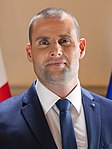 premiér Robert Abela (PES – PL) | |||
– Spolková republika Německo (18,54 % populace EU) – člen od 8. prosince 2021 |  spolkový kancléř Olaf Scholz (PES – SPD) |  – Nizozemsko (3,89 % populace EU) – člen od 2. června 2024 |  předseda vlády Dick Schoof (nezávislý) | – Polská republika (8,47 % populace EU) – člen od 13. prosince 2023 |  předseda vlády Donald Tusk (EPP – PO) | |||
 – Portugalská republika (2,30 % populace EU) – člen od 2. dubna 2024 |  předseda vlády Luís Montenegro (EPP – PSD) |  – Rakouská republika (1,98 % populace EU) – člen od 3. března 2025 | spolkový kancléř Christian Stocker (EPP – ÖVP) |  – Republika Slovinsko (0,47 % populace EU) – člen od 1. června 2022 |  předseda vlády Robert Golob (Obnova – GS) | |||
 – Rumunsko (4,31 % populace EU) – člen od 21. prosince 2014 |  prezident Ilie Bolojan (EPP – Nez.[b]) |  – Řecká republika (2,39 % populace EU) – člen od 26. června 2023 | (c) kremlin.ru, CC BY 4.0 předseda vlády Kyriakos Mitsotakis (EPP – ND) |  – Slovenská republika (1,22 % populace EU) – člen od 25. října 2023 |  předseda vlády Robert Fico (Nzř.[c] – SMER-SD) | |||
 – Španělské království (10,56 % populace EU) – člen od 2. června 2018 |  předseda vlády Pedro Sánchez (PES – PSOE) | – Švédské království (2,30 % populace EU) – člen od 18. října 2022 |  předseda vlády Ulf Kristersson (EPP – M) | |||||
Vysvětlivky
- ↑ Podíly populace členských států EU jsou využívány k nejčastějšímu mechanizmu hlasování Rady v podobě kvalifikované většiny. Pro přijetí návrhu kvalifikovanou většinou je třeba souhlasu 55 % členských států a států zastupujících nejméně 65 % celkového počtu obyvatel EU. Hodnoty podílů populací jednotlivých států vycházejí z dokumentu Rady COUNCIL DECISION (EU, Euratom) 2020/2030 of 10 December 2020 amending the Council's Rules of Procedure.[2]
- ↑ Ilie Bolojan pozastavil členství v Národně liberální straně. Dle ústavy nemůže být prezident členem politické strany.
- ↑ Slovenské straně SMER-SD bylo v říjnu 2023 pozastaveno členství ve Straně evropských socialistů.[3]
Politická spojenectví

Členové Evropské rady se organizují v politických stranách na vnitrostátní a evropské úrovni včetně aliancí, jako je například Obnova Evropy. Ty často před zasedáním Evropské rady pořádají předběžná zasedání. Příslušníci rady mohou být také bezpartijní či nezařazení. Evropská rada je složena tak, aby zastupovala státy EU, a nikoliv politické aliance, a rozhodnutí jsou zpravidla přijímána podle těchto zásad, ačkoliv ideologická shoda může podbarvovat jejich politické dohody a výběr jmenování (např. předsedy).
V tabulce je uveden počet členů rady podle příslušnosti k evropským politickým stranám, případně aliancím, a jejich celková váha při hlasování daná součtem obyvatel jednotlivých států sdružených ve stranách. Mapa uvádí příslušnost členských států Evropské unie k evropským politickým stranám podle členství jejich zástupců v radě.
| Evropská politická strana | členové | % populace | |
|---|---|---|---|
| Evropská lidová strana/skupina EPP | 11 | 25,6 % | |
| Obnova Evropy (ALDE, EDP, RE) | 5 | 22,4 % | |
| Strana evropských socialistů (PES) | 4 | 30,6 % | |
| Nezávislí | 3 | 2,4 % | |
| Strana evropských konzervativců a reformistů (ECR) | 2 | 15,7 % | |
| Nezařazení | 2 | 3,4 % | |
| Celkem | 27 | 100 % | |
- Účastníci zasedání bez členství v Evropské radě
| Předsedkyně Evropského parlamentu | Vysoký představitel Unie | ||||
|---|---|---|---|---|---|
 – Evropská unie – zvolena 18. ledna 2022 – volby 2019 plánované 2024 |  předsedkyně Evropského parlamentu Roberta Metsolaová (EPP) |  – Evropská unie – zvolen 1. prosince 2019 – volby 2019 plánované 2024 |  vysoký představitel Unie Josep Borrell (PES) | ||
Časová osa účastníků zasedání
Odkazy
Reference
V tomto článku byl použit překlad textu z článku European Council na anglické Wikipedii.
- ↑ VEBER, Václav. Dějiny sjednocené Evropy. Praha: Nakladatelství Lidové noviny, 2004. 645 s. ISBN 80-7106-663-X. Kapitola 14. Instituce Evropské unie, s. 481–482.
- ↑ CCOUNCIL DECISION (EU, Euratom) 2020/2030 of 10 December 2020 amending the Council's Rules of Procedure [online]. Official Journal of the European Union (eur-lex.europa.eu), 2017-12-29 [cit. 2021-07-18]. Dostupné online. (anglicky)
- ↑ European socialists suspend Robert Fico’s Smer party and its ally Hlas. POLITICO [online]. 2023-10-12 [cit. 2023-10-25]. Dostupné online. (anglicky)
Literatura
- Jak funguje Evropská unie. Průvodce institucionálním rámcem EU. Lucemburk 2013, s. 12–13.
- MCCORMICK, John: Understanding the European Union. A Concise Introduction. 6th ed. 2014, s. 76–79.
Související články
Externí odkazy
 Obrázky, zvuky či videa k tématu Evropská rada na Wikimedia Commons
Obrázky, zvuky či videa k tématu Evropská rada na Wikimedia Commons - www.consilium.europa.eu – oficiální stránky Evropské rady
Média použitá na této stránce
This is the national flag of Belgium, according to the Official Guide to Belgian Protocol. It has a 13:15 aspect ratio, though it is rarely seen in this ratio.
Its colours are defined as Pantone black, Pantone yellow 115, and Pantone red 032; also given as CMYK 0,0,0,100; 0,8.5,79,0; and 0,94,87,0.Vlajka České republiky. Podoba státní vlajky České republiky je definována zákonem České národní rady č. 3/1993 Sb., o státních symbolech České republiky, přijatým 17. prosince 1992 a který nabyl účinnosti 1. ledna 1993, kdy rozdělením České a Slovenské Federativní republiky vznikla samostatná Česká republika. Vlajka je popsána v § 4 takto: „Státní vlajka České republiky se skládá z horního pruhu bílého a dolního pruhu červeného, mezi něž je vsunut žerďový modrý klín do poloviny délky vlajky. Poměr šířky k její délce je 2 : 3.“
Finská vlajka
Při zobrazení tohoto souboru lze snadno přidat orámování
Zelený pruh má znázorňovat většinové katolické obyvatelsto Irska, oranžový pruh reprezentuje protestantskou menšinu a bílý pruh uprostřed znázorňuje mír a harmonii mezi nimi.
Flag of Portugal, created by Columbano Bordalo Pinheiro (1857-1929), officially adopted by Portuguese government in June 30th 1911 (in use since about November 1910).
This is a logo for European Council and the Council of the European Union. The logo is inspired by the lantern-shaped structure at the heart of the Europa building, the headquarters of both institutions.
Autor: European Parliament, Licence: CC BY 2.0
On Tuesday morning, Swedish Prime Minister Ulf Kristersson discussed the priorities of the Swedish Council Presidency with MEPs in Strasbourg.
During his address, Mr Kristersson said that his country’s first priority at the helm of the Council would be Europe’s security by continuing to support war-torn Ukraine and highlighting the EU’s geopolitical significance in an increasingly uncertain world. However, he also stressed that “when we build security, we must also look at other aspects that are close to our citizens”, pointing out that the EU needs to cooperate more effectively against organised crime and work towards a common and coherent migration policy.
He went on to talk about the EU’s crucial role in the green transition, its links to Europe’s long-term competitiveness and that many companies want to take advantage of the shift from a fossil-dependent to a fossil-free economy. The job of politicians should be to provide the right framework, he said.
“If European companies are to produce the energy, and make the batteries, the electric cars and the fossil-free steel of the future, they need good conditions to compete”, he underlined.
Lastly, Prime Minister Kristersson highlighted that another Swedish priority will be to uphold the EU’s common, fundamental values.
“It is not corruption and cronyism that Ukraine, Moldova and other candidate countries are aspiring towards. (...) Liberal democracy - the combination of popular sovereignty and individual rights - is what separates the EU from other international institutions”, said the Swedish Prime Minister.
Commission Vice-President Maroš Šefčovič highlighted that the EU must maintain its unity and determination to support Ukraine and that those in Russia responsible for the aggression and crimes in Ukraine must be held accountable.
The green transition will also be a key area, he highlighted; in 2022, the EU got twice as much energy from renewables than expected, and it should seek to double the amount again in 2023. Europe should boost its competitiveness, reinvigorate EU investments under Repower EU and support its clean tech industry - especially at a time when countries like the USA and China are using subsidies that harm European competitiveness. He also welcomed the Swedish Presidency’s focus on migration, reiterating the need for a robust asylum and migration system.
Speakers on behalf of political groups EP political groups’ leaders agreed on most of the priority areas the Presidency should focus on, like innovation, job opportunities, migration, climate change and the Single Market, while putting forward different proposals on how to achieve results in these areas. Some groups stressed the need to counteract the recent US industry subsidies by boosting EU competitiveness also through trade agreements. Others focused more on building a strong social Europe to protect vulnerable families and ensure the integrity of the single market as well as protecting the EU’s borders and rescuing migrants at sea.
www.europarl.europa.eu/news/en/press-room/20230113IPR6662... ____
This photo is free to use under Creative Commons license CC-BY-4.0 and must be credited: "CC-BY-4.0: © European Union 2022– Source: EP". (creativecommons.org/licenses/by/4.0/) No model release form if applicable. For bigger HR files please contact: webcom-flickr(AT)europarl.europa.euAutor: Palácio do Planalto from Brasilia, Brasil, Licence: CC BY 2.0
(Budapeste - Hungria, 17/02/2022) Presidente da República Jair Bolsonaro cumprimenta o Primeiro-Ministro da Hungria, Viktor Mihály Orbán.
Foto: Alan Santos/PRAutor: Ieva Ābele, Saeima, Licence: CC BY-SA 4.0
2022.gada 1.novembris. Deputāte Evika Siliņa dod svinīgo solījumu. Foto: Ieva Ābele, Saeima
Autor: European People's Party, Licence: CC BY 2.0
EPP Summit, 21 March, Brussels
Autor: Lauri Heikkinen, valtioneuvoston kanslia, Licence: CC BY 4.0
Petteri Orpo's official portrait in 2023
Autor: Neznámý, Licence: CC0
Directeur-generaal AIVD Dick Schoof
Autor: Unión Europea en Perú from Lima, Perú, Licence: CC BY 2.0
Josep Borrell
Autor:
- derivative work: Homo ergaster (talk)
President of Lithuania Gitanas Nausėda
Autor: Ministerie van Buitenlandse Zaken, Licence: CC BY-SA 2.0
Cypriot politician Nikos Christodoulides, 2019
Autor: Csvpartei, Licence: CC BY-SA 4.0
Luc Frieden; Porträt; CSV, Luxemburg
Autor: Arno Mikkor , Licence: CC BY 2.0
Former Slovak Prime Minister Robert Fico at the European Council summit
Autor: European People's Party, Licence: CC BY 2.0
EPP Summit, 24 March 2022, Brussels
Autor: Media Relations Office, Office of the Prime Minister of Malta, Licence: CC BY-SA 4.0
Robert Abela (born 7 December 1977) is a Maltese lawyer and politician who has served as prime minister of Malta and leader of Labour Party since 2020.
Eurozone
Autor: European Parliament from EU, Licence: CC BY 2.0
In his address to MEPs , Zambia’s President Hakainde Hichilema thanked Parliament for its support, advocated closer relations with the EU and condemned the war against Ukraine.
Introducing President Hichilema EP President Roberta Metsola said Zambia stands as an example of a mature democracy for the whole of the African continent. Now more than ever, in the current troubled geopolitical context and during Russia’s efforts to increase its influence in Africa, Zambia’s progress needs to be supported . President Metsola also reminded MEPs that back in 2017 Parliament adopted a resolution condemning the incarceration of President Hichilema on politically motivated charges.
“Zambia is back in business, in the Champions league”, President Hichilema said, referring to the results of country’s most recent elections. He reiterated Zambia’s commitment to put people’s interests, reforms, free media, the rule of law, youth and education at the top of his political agenda. He advocated for enhanced Africa- EU cooperation, more trade, and more exchange of knowledge.
“We categorically say no to the war in Ukraine. It is tragic and heart-breaking to witness the thousands of lives lost and millions displaced unnecessarily, as a result of an avoidable conflict in Ukraine”, President Hichilema said, while speaking about peace and security in the world. He added that the impact of the war is felt in his country in the form of higher fuel, food and fertilizers prices, and he urged all parties to focus more on improving the lives of people, not waging war. President Hichilema also offered his help in overcoming food shortages.
President Hichilema also expressed his profound gratitude for the support of the European Parliament for him and for Zambia during his incarceration and the dark days of Zambia’s democratic development. “I remain indebted to you for standing up for human rights and freedom of all people in Zambia”, he said.
This photo is free to use under Creative Commons license CC-BY-4.0 and must be credited: "CC-BY-4.0: © European Union 2022– Source: EP". (<a href="https://creativecommons.org/licenses/by/4.0/" rel="noreferrer nofollow">creativecommons.org/licenses/by/4.0/</a>) No model release form if applicable. For bigger HR files please contact: webcom-flickr(AT)europarl.europa.euThe twelve golden European Union stars.
(c) President.gov.ua, CC BY 4.0
Meeting of the President of Ukraine with the Presidents of France and Romania, the Chancellor of Germany and the Prime Minister of Italy
Autor: JLogan, Licence: CC BY-SA 3.0
Chart of the results of the 2009 European election by the groups in Parliament, intended to replace Image:Composition of the European Parliament.svg.
- In order to allow the chart to be used on all wikis, the chart has no annotations in English.
- The colours follow the convention established on English Wikipedia and are coloured to the following schema:
- For details on English Wikipedia conventions and the groups, see en:Political groups of the European Parliament.
Autor: aJAX, Licence: CC BY-SA 4.0
The legislative triangle of the European Union
Autor: European People's Party, Licence: CC BY 2.0
EPP Summit, 20 October 2022, Brussels
(c) kremlin.ru, CC BY 4.0
Vladimir Putin met with Prime Minister of Greece Kyriakos Mitsotakis at the Bocharov Ruchei residence in Sochi.
Autor: gov.ro (Romanian Government), Licence: Attribution
Ilie Bolojan, 11 May 2023, Oradea
Autor: David Sedlecký, Licence: CC BY-SA 4.0
Petr Fiala, český politik
Autor: Original map created by User:Mfloryan, modified by User:Glentamara and User:Brainiac242, Licence: CC BY-SA 3.0
Aktuální evropská politická příslušnost současných členů Evropské rady:
Portrait of António Costa, President-elect of the European Council, October 2024
Autor: JLogan, Licence: CC BY-SA 3.0
Chart of the results of each European election by their group in Parliament, intended to replace Image:Ep1979-2004.png.
- In order to allow the chart to be used on all wikis, the chart has no annotations in English.
- The chart has no exact percentages on it because exact percentages vary dependent on which source you're looking at: the problems inherent in assembling results from multiple member states, who supply results in different languages at different dates, using different methods, means that even reliable sources differ slightly when compared to each other. To get around this problem, the percentages depicted are based on the agreed average on English Wikipedia.
- The colours follow the convention established on English Wikipedia and are coloured to the following schema:
- For details on English Wikipedia conventions and the groups, see en:Political groups of the European Parliament.
Autor: FinnishGovernment, Licence: CC BY 2.0
Kuvassa vasemmalla Tanskan pääministeri Mette Frederiksen ja oikealla Suomen pääministeri Sanna Marin
<a href="http://www.valtioneuvosto.fi/ajankohtaista/kuvapankki/kuvaoikeudet-flickr/fi.jsp" rel="noreferrer nofollow">Kuvien käyttöehdot</a> - <a href="http://www.valtioneuvosto.fi/ajankohtaista/kuvapankki/kuvaoikeudet-flickr/sv.jsp" rel="noreferrer nofollow">Villkor för att använda bilderna</a> - <a href="http://www.valtioneuvosto.fi/ajankohtaista/kuvapankki/kuvaoikeudet-flickr/en.jsp" rel="noreferrer nofollow">Use and rights</a>
© Danish Prime Minister’s OfficeAutor: Governo Italiano, Licence: CC BY 3.0 it
Official portrait of Giorgia Meloni, 2023
Ljubljana, DZ. Novi predsednik vlade Robert Golob.
Autor: Ssolbergj; description by Martinvl, Licence: CC BY-SA 4.0
Map showing the extent of theSchengen Agreement.
© European Union, 2025, CC BY 4.0
Portrait of Ursula von der Leyen, President of the European Commission
(c) Oireachtas (Open Data) PSI Licence, CC BY 4.0
Official portrait of Micheál Martin TD used on the Houses of the Oireachtas website.


